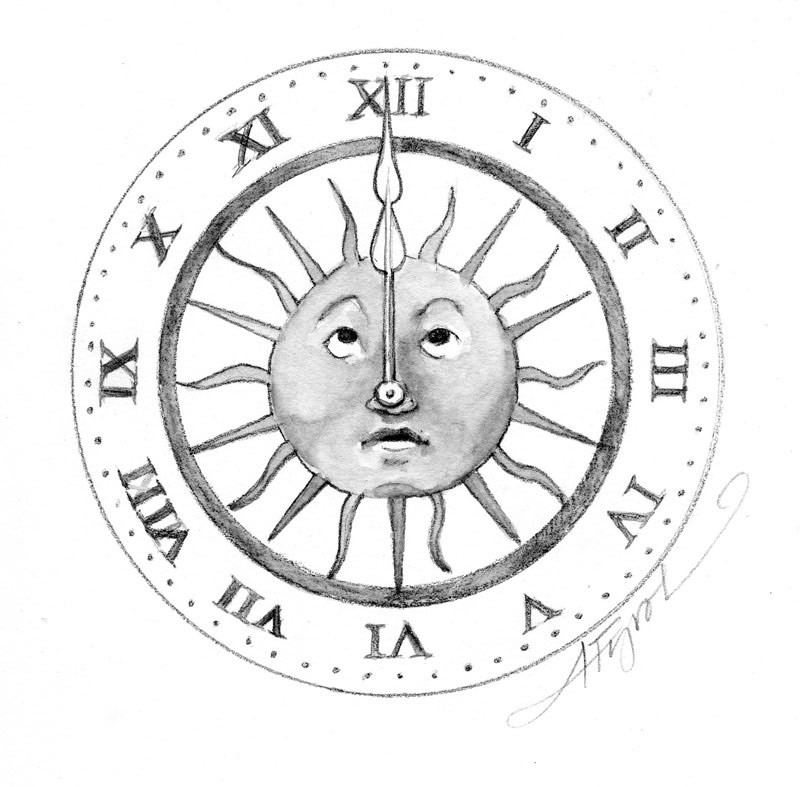
It is a magical time we anticipate for months. The sap begins to flow in bare trees. Even in cold, with snow covering the ground, the redwings and robins and grackles return within a day or two of when they always have. Woodland wildflowers push their shoots up beneath patches of snow, their flower buds curled tight against the morning frost, ready for the brief opportunity to bloom in the shadeless forest. From the pond the wood frogs quack in mating, to be followed soon by peepers, then American toads. Just out of hibernation, a mourning cloak butterfly soars by. And, on a certain rainy night in April, spotted salamanders begin their trek to vernal pools.
Too early, we often think. But they are the better judges. They have done this for millennia. But how do they “know” it is their time?
Plants and animals everywhere have so-called “biological clocks,” mysterious mechanisms that control the timing of major periodic functions such as sleep, dormancy, migration, mating, foraging and flowering. These clocks are an organism’s means to live within the parameters of a particular environment. The external cues that the animals and plants tune into, called “zeitgebers” (a German word meaning “time setters”), are usually the predictably repetitive environmental forces in a region.
In New England, where length of day and length of night change so dramatically over the year, the changing ratio of light to dark (photoperiod) is the mainspring of many biological clocks. Here, most plants and animals have daily (circadian, literally ‘about a day’) and/or seasonal rhythms. In tropical regions, where the light-dark ratio is rather constant and the seasons defined by wet-dry periods, the zeitgeber is precipitation. For dwellers of coastal intertidal zones, it is often tides: Crabs, barnacles, clams, even rock-clinging seaweeds exhibit tidal rhythms in feeding, molting, reproduction or other activities. For many nocturnal animals, such as some worms, crustaceans, insects, salamanders, and even mammals, the moon plays a major role. Still other zeitgebers are ocean currents, temperature, sound, social stimuli and magnetic fields. They may even be biological—honeybees and carpenter bees, for example, may fly only during a brief time of day when their primary host flowers secret nectar.
Many, if not most, plants and animals, in fact, have more than one clock operating simultaneously, reflecting the multifaceted environments in which they live or through which they pass. Two examples would be: shorebirds’ annual migration, feather molts, and intertidal feeding; and black bears’ late spring mating, nocturnal feeding and winter hibernation.
An organism’s genetics establishes the kind of clock it will be. An animal with a circadian rhythm cannot be forced, no matter how hard, into a tidal one, or vice versa. Certain cave crickets, though blind and never exposed to daylight, maintain the day-night schedule of their distant terrestrial ancestors. A long-day plant (one that flowers when the duration of light exceeds that of dark) cannot be turned into a short-day one.
Once a clock is locked into a zeitgeber, it keeps running according to it, regardless of where the animal goes or is taken. Fiddler crabs in their natural, sandy coastal environment come out of their burrows and forage on the exposed flats in the day at low tide. If raised from eggs in tideless laboratories where lighting (or darkness) is constant, they continue to be active when it is daytime low tide outside. Another example is jet lag in humans. Our day/night clocks are set to where we live; when jets transport us to radically different time zones, we bring the old schedule with us, and thus feel sleepy or hungry when we used to, not when the new environs tell us we should be.
Yet biological clocks, as mechanical ones, do not run on forever unless occasionally rewound and reset. But again, it is the environment that does both. If kept in controlled-environment labs for a long time, fiddler crabs begin to lose the predictability of their activity. But when taken back to their home, or to a new one with an entirely different tidal calendar, they adapt to either. Human airplane travelers comfortably adopt the schedules of their new locale within a day or two.
Where clocks reside within organisms, and how they receive their zeitgebers, varies considerably. In birds the clock is in the tiny pineal gland deep within the brain; in mammals, the hypothalamus at the brain’s base; in insects, the brain itself. In plants, phytochromes, molecular proteins in cells, are the sensors. An animal clock directs the endocrine system to produce hormones controlling physiological function. A plant clock has no such specific site, but seems to be in cells throughout its tissue and transmits signals to the target—flowers, growing tips, seeds—via chemicals in the sap.
These amazing clocks, then, are much more than timekeepers. They are what keep us together, organism and environment. Indeed, they let us know that one is inseparable from the other. They demonstrate, through all our variety, our common imprinting from the world.

